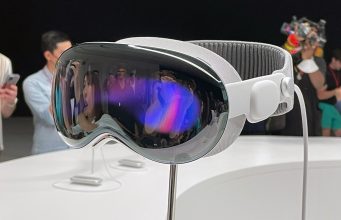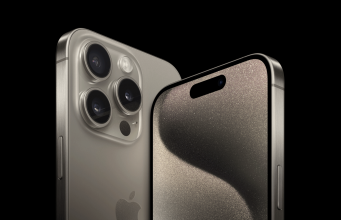Virtual influencers: meet the AI-generated figures posing as your new online friends
The future of influence is here: a digital avatar that captivates millions of adoring fans while offering unparalleled customisation and round-the-clock availability.
Virtual influencers are transforming the way content is created, consumed and marketed online. They represent an electrifying dance between cutting-edge technology and our desire for connection. But, at the same time, they are yet another product being peddled by marketers that want our money.
Upon close inspection, we can see the risks that emerge with these blurred realities.
What are virtual influencers?
While virtual influencers aren’t a particularly new concept – virtual Japanese popstar Kyoko Date has been around since 1996 – recent advances in technology have thrust them into the spotlight.
Also called digital influencers or AI influencers, these digital personalities have a social media presence and interact with the world from a first-person perspective.
They’re created by 3D artists using CGI (computer-generated imagery), motion-capture technology and AI tools. Creators can make them look and act exactly how they want, and their personas are thoughtfully developed to align with a target audience.
There are three main types of virtual influencers: non-humans, animated humans and life-like CGI humans. Each one provides an innovative way to connect with audiences.
Why do virtual influencers exist?
Advancements in AI, the rise of social media and visions of the metaverse (in which the real and virtual worlds are blended into a massive immersive digital experience) are synergistically fuelling the growth of virtual influencers.
Their popularity has prompted marketing agencies to embrace them as a cost-effective promotional strategy.
While real influencers with millions of followers may demand hundreds of thousands of dollars per post, one 2020 estimate suggested virtual influencer Lil Miquela charged a more reasonable £6,550 (currently about A$12,600).
Virtual influencers have clear benefits when it comes to online engagement and marketing. They don’t age, they’re free from (real) scandals and they can be programmed to speak any language. It’s no surprise a number of companies and celebrities have caught onto the trend.
In 2019, supermodel Bella Hadid posed with Lil Miquela in ads for Calvin Klein in what one columnist dubbed a “terrifying glimpse of the future”.
Since then, virtual influencers have become even more popular.
In 2021, Prada introduced a CGI ambassador for its perfume Candy. More recently, Lil Miquela has popped up in a number of high-profile brand campaigns and celebrity interviews. Even rapper Timbaland has said he is considering a collaboration.
The transparency issue
Virtual influencers have a unique cultural dimension. They exist in a murky space between our world and the virtual which we’ve never quite explored. How might they impact us?
One major concern is transparency. Many virtual influencers already present as human-like, and it may become increasingly difficult to distinguish between them and real people. This is particularly problematic in an advertising context.
There’s a problem with that argument, though. Even though humans are endlessly capable of generating new strings of language, people usually don’t. Humans are constantly recycling bits of language they’ve encountered before and shaping their speech in ways that respond – consciously or unconsciously – to the speech of others, present or absent.
As Mikhail Bakhtin – a Chomsky-like figure for linguistic anthropologists – put it, “our thought itself,” along with our language, “is born and shaped in the process of interaction and struggle with others’ thought.” Our words “taste” of the contexts where we and others have encountered them before, so we’re constantly wrestling to make them our own.
Even plagiarism is less straightforward than it appears. The concept of stealing someone else’s words assumes that communication always takes place between people who independently come up with their own original ideas and phrases. People may like to think of themselves that way, but the reality shows otherwise in nearly every interaction – when I parrot a saying of my dad’s to my daughter; when the president gives a speech that someone else crafted, expressing the views of an outside interest group; or when a therapist interacts with her client according to principles that her teachers taught her to heed.
In any given interaction, the framework for production – speaking or writing – and reception – listening or reading and understanding – varies in terms of what is said, how it is said, who says it and who is responsible in each case.
What AI reveals about humans
The popular conception of human language views communication primarily as something that takes place between people who invent new phrases from scratch. However, that assumption breaks down when Woebot, an AI therapy app, is trained to interact with human clients by human therapists, using conversations from human-to-human therapy sessions. It breaks down when one of my favorite songwriters, Colin Meloy of The Decemberists, tells ChatGPT to write lyrics and chords in his own style. Meloy found the resulting song “remarkably mediocre” and lacking in intuition, but also uncannily in the zone of a Decemberists song.
As Meloy notes, however, the chord progressions, themes and rhymes in human-written pop songs also tend to mirror other pop songs, just as politicians’ speeches draw freely from past generations of politicians and activists, which were already replete with phrases from the Bible. Pop songs and political speeches are especially vivid illustrations of a more general phenomenon. When anyone speaks or writes, how much is newly generated à la Chomsky? How much is recycled à la Bakhtin? Are we part robot? Are the robots part human?
People like Chomsky who say that chatbots are unlike human speakers are right. However, so are those like Bakhtin who point out that we’re never really in control of our words – at least, not as much as we’d imagine ourselves to be. In that sense, ChatGPT forces us to consider an age-old question anew: How much of our language is really ours?![]()
Brendan H. O’Connor, Associate Professor, School of Transborder Studies, Arizona State University
This article is republished from The Conversation under a Creative Commons license. Read the original article.
A linguistic anthropologist explains how humans are like ChatGPT Read More »













